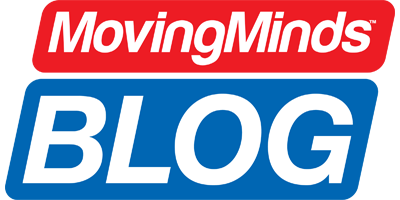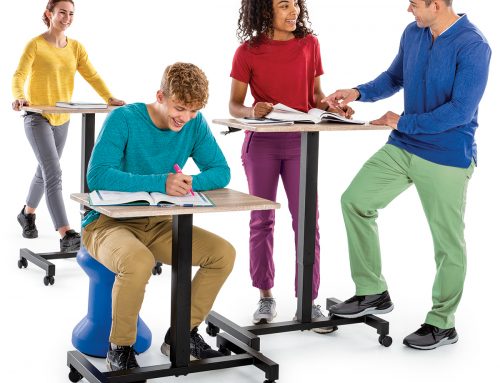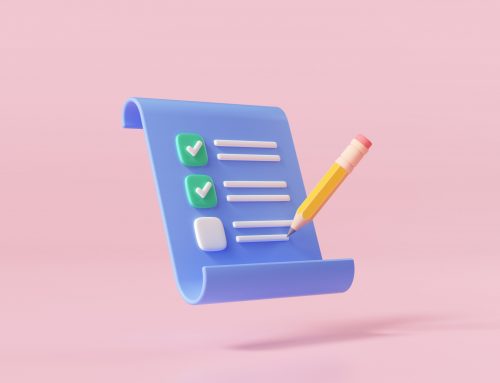When it comes to understanding teachers’ perceptions of movement in the classroom, the research is clear. Teachers understand the value of physical activity for kids and are generally supportive of creating more active classrooms for their students (McMullen, Martin, Jones, & Murtagh, 2016; Michael et al., 2019). Though, this is not surprising given the well documented benefits of physical activity associated with physical health, mental health, and learning (Institute of Medicine [IOM], 2013). At the end of the day, it can likely be assumed that teachers want what is best for kids—and movement in the classroom not only has numerous benefits, but it also something students enjoy!
Less is known, however, about how the students themselves feel about movement in the classroom. Recently, I worked with some elementary school students to find out their perceptions of movement in the classroom and found their ideas really interesting! The title of our study “I want to do it all day! Students experiences of movement integration” (McMullen, MacPhail & Dillon, 2019) explored the perceptions of children aged 5-12 who participated in classroom-based physically active lessons that were connected to academic content (movement integration).
When asked during interviews to tell us about movement in the classroom and draw themselves participating in active classroom lessons, the students in our study reported that the lessons were fun, they learned better during active lessons as opposed to sedentary lessons, and they felt that the lessons contributed to their fitness development.
Physically Active Lessons are More Fun!
Probably the most unsurprising finding from this study was that students overwhelmingly described movement in the classroom as fun and “better than the boring way of learning!” Students in this study regularly referred to the movement lessons as more fun than ones where there were sitting down. This finding was significant because when teachers have been asked about integrating movement into their classrooms, they reported they would be more inclined to include activities that their students enjoy and find fun (McMullen, Kullina and Cothran, 2014).
Students Learn Better when they Move!
Schools are places of learning—and therefore, at all levels of influence, stakeholders are likely most interested in creating environments where students are able to learn effectively. The students we talked to were convinced that they learned better when they were moving instead of sitting. For instance, they overwhelmingly talked about how much more engaged they were in the learning process, and they wanted more movement throughout the school day to help them learn. While there will be exceptions to this finding, the research on physical activity and cognition would support the ideas that these students had related to improved learning during and after movement (Donnelly & Lambourne, 2011).
Students Feel Stronger Because of Movement in the Classroom!
Children in the United States are faced with rising obesity rates and as a result are at an increased risk of developing disease (Hales et al., 2017). Therefore, finding ways to increase health-enhancing levels of physical activity throughout their day has been suggested as an effective prevention strategy (IOM, 2013). Given this, it is encouraging that the students we worked with considered movement in the classroom to be an obvious way to improve their fitness, and they characterized the movement opportunities as exercise. While this study did not objectively measure physical activity or fitness measures, the students who participated drew pictures of muscles, them sweating, and referred to the movement in the classroom as exercise in their interviews.
To summarize, the main findings of the study are that students had more fun when they were moving. Secondly, they believed their learning improved. Lastly, they were getting more fit as a result of classroom movement. This is significant for teachers who are considering incorporating more movement into their classrooms.
Above all, teachers should consider finding ways to increase the amount of physical activity in the classroom, especially when it can be integrated with academic concepts. Not only will there be potential for students to experience more enjoyment of classroom activities, but it may also result in improved academic and fitness outcomes.
Easy Ways to Add Movement!
References:
Donnelly, J.E., & Lambourne, K. (2011). Classroom-based physical activity, cognition, and academic achievement. Preventive Medicine, 52, S36-S42.
Hales, C.M., Carroll, M.D., Fryar, C.D., & Ogden, C.L. (2017). Prevalence of obesity among adults and youth: United States, 2015–2016. NCHS data brief, no 288. Hyattsville, MD: National Center for Health Statistics.
Institute of Medicine. (2013). Educating the student body: Taking physical activity and physical education to school. The National Academic Press: Washington, DC.
McMullen, J.M., MacPhail, A., & Dillon, M. (2019). “I want to do it all day!”—Students’ experiences of classroom movement integration. International Journal of Educational Research, 94, 52-65, doi.org/10.1016/j.ijer.2018.11.014.
McMullen, J.M., Martin, R., Jones, J., & Murtagh, E.M. (2016). Moving to learn Ireland – Classroom teachers’ experiences of movement integration. Teaching and Teacher Education, 60, 321-330.
McMullen, J.M., Kulinna, P.H. & Cothran, D. (2014). Physical activity opportunities during the school day: Classroom teachers’ perceptions of using activity breaks in the classroom. Journal of Teaching in Physical Education, 33, 511-527.
Michael, R.D., Webster, C.A., Egan, C., Nilges, L., & Ali, B., Johnson, R., Carson, R.L. (2019). Facilitators and Barriers to Movement Integration in Elementary Classrooms: A Systematic Review. Research Quarterly for Exercise and Sport. 1-12. 10.1080/02701367.2019.1571675

Dr. McMullen is an Associate Professor of Physical Education and Physical Activity Leadership. Her research focuses on whole-of-school physical activity promotion and she is particularly interested in teacher and student voice when it comes to promoting physical activity in schools. Her personal interests include being active, spending time with family and friends, and traveling to all corners of the world.









Leave A Comment